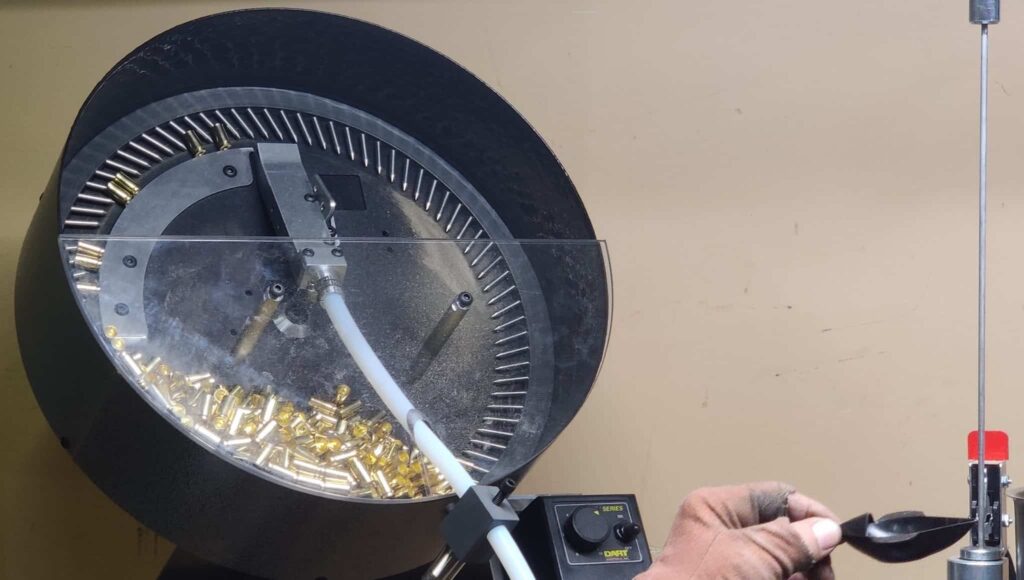Uncategorized
HOW ARE SMALL RIFLE PRIMERS MADE?
HOW ARE SMALL RIFLE PRIMERS MADE? Every rifle, including your favorite hunting rifle, is powered by a primer that ignites gunpowder to propel the bullet down the barrel. A primer is powerful enough to detonate the charge for one shot. However, after that first shot you will need to re-ignite this powder charge without using more priming material through firing another cartridge case and adding a new one.

You can buy a small rifle primer pack at any sporting goods store and it’s also possible to make large rifle primers yourself. Here’s how they’re made. HOW ARE SMALL RIFLE PRIMERS MADE?

HOW ARE THEY MADE?
Primers are made by mixing together compounds that will create an explosion after ignition. The first layer of the primer mix is the propellant, which helps to sustain the explosion. The next layer is made of more explosive compounds, which are what will actually cause the primer to detonate under pressure. These high explosives are nitrocellulose and nitroglycerin (which is also used as a primary explosive ingredient). HOW ARE SMALL RIFLE PRIMERS MADE?
Pistol primers also contain secondary chemicals on top of these explosive compounds, which help keep it burning evenly throughout its life on Earth. These chemicals include sodium and potassium nitrate. In a small rifle primer, these secondary compounds are the main ingredient for providing the percussion ignition a uniform ignition system. HOW ARE SMALL RIFLE PRIMERS MADE?
In reality what you see is just the primer material itself. A roll of paper with a centerfire primer inserted has been wrapped around a couple of rollers to form a cylinder. This primer cups (sometimes cap gun caps) are then filled with gun powders that will be responsible for sending the bullet flying down range once the firing pin hits the percussion cap. HOW ARE SMALL RIFLE PRIMERS MADE?
THE PRIMING MIXTURES
If you were to take some of the nitroglycerin out of boxer primers and then do some math, it would come out to be approximately 60 percent of the entire priming compound – filling most of the new primer cup or metal cup. HOW ARE SMALL RIFLE PRIMERS MADE?
In reality, this is only the initial high speed burn from the flash hole. The rest of it is burned off by hot gas from firing powders. Here are some other chemicals used in the wet mix:
- potassium chlorate
- mercury fulminate
- barium nitrate
- potassium chloride
- lead styphnate
- antimony sulfide
- and other non-mercuric heavy metals
THE PRIMER CAP
Primer caps are the part of the small pistol primers that actually holds the gunpowder in place. On top of this cap is the wick, which will absorb excess moisture (which can result in poor burn quality in some brass cartridge cases). HOW ARE SMALL RIFLE PRIMERS MADE?
THE PRIMER WICKS
The wicks are designed to remove excess moisture from around the propellant for a cleaner burn. They function similarly to mechanical pencils in its base process. The wick has a fairly large reservoir underneath, which goes into contact with powders. When the wick is pressed against the powder it will absorb some moisture. When this occurs, the wick’s reservoir fills up with powder until its size becomes close to that of the powder. HOW ARE SMALL RIFLE PRIMERS MADE?
HOW MUCH PRIMER COMPOUND CHOICES DO I HAVE?
- Corrosive primers
- centerfire ammunition priming mix
- non-corrosive primers
- surplus ammunition
- lead based primers
- modern primers
- other lead free primers
MYSTOCKUPUSA LLC : A TOP AMMUNITION CHOICE
While it’s possible to manufacture your own small rifle primer, it’s more cost-effective and convenient in the long run to purchase ammunition cartridges from a trusted retailer like MystockupUSA. Our dedication to quality is what sets us apart from the competition. Plus, our online portal lets you shop anytime, anywhere! HOW ARE SMALL RIFLE PRIMERS MADE?
